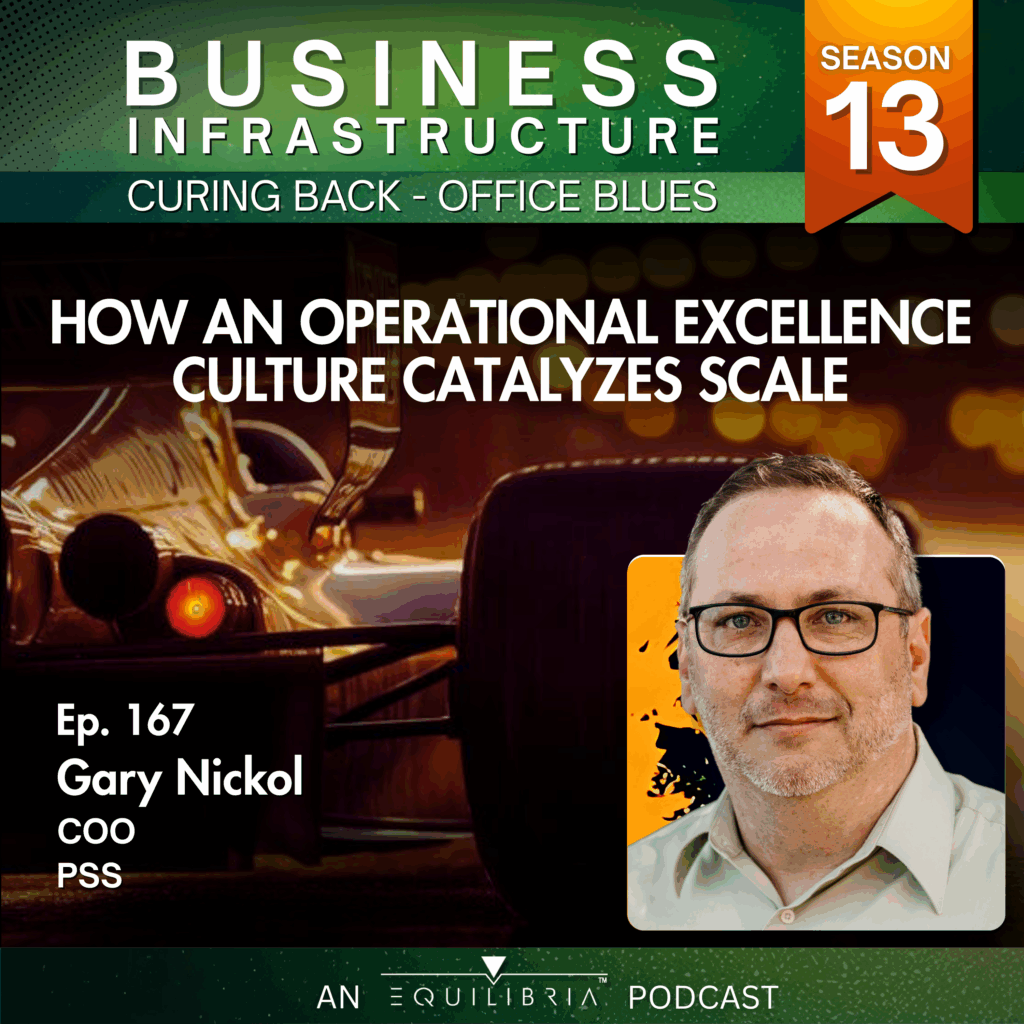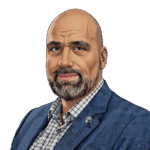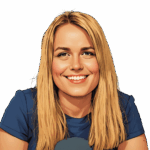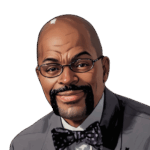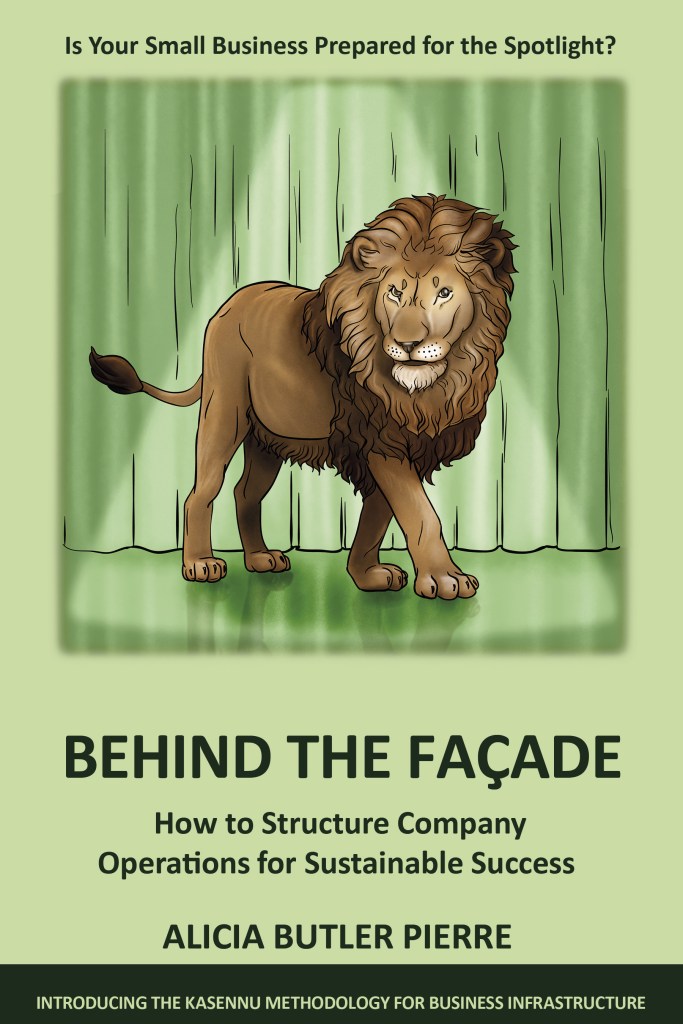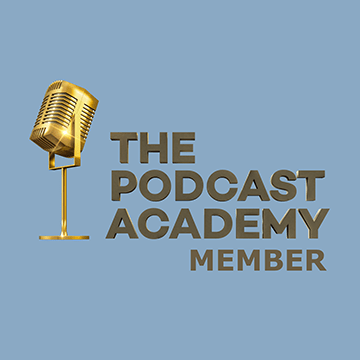Transcript
Small, mid sized and corporate enterprises all have something in common. They’re all competing for attention. Attention not just from external customers, but from their internal teams as well. Hi, I’m Alicia Butler Pierre. Implementing a culture of continuous improvement and operational excellence can often fall on deaf ears. As leaders and entrepreneurs, we’re challenged to figure out unique and creative ways to improve operations, and visual aids can be incredibly effective in this regard.
You’re about to hear from a COO with a humorous take on how he and his team work together to align their company’s growth goals with the operational tactics required to meet demand. As he says, if you make it grow, I’ll make it go.
This is season 13, episode 167 let’s Start the show welcome to Business Infrastructure, the podcast about carrying back office blues of fast growing businesses. If you’re a business owner or operator looking for practical tips and solutions to scaling your business in a sustainable manner, you’re in the right place.
Now, here’s your hostess, Alicia Butler Pierre. Have you ever wished you had a mentor that could provide advice on how to improve your customer experience and scale your business? Well, HubSpot’s got you covered. Its new podcast, the Shakeup, is a show about business builders who dare to be different.
Alexis Gay and Brianne Kimmel dive into the stories behind the most disruptive companies in business, examining the decisions and investments made by leaders who are building for the future by challenging the status quo.
What I love about this show is that they don’t just talk the talk, but they walk the walk too. Not only do Alexis and Brianne interview successful founders and innovators, but they have firsthand experience through their own backgrounds as business leaders and investors, sprinkled with a little comedy to really keep things interesting.
Listen, learn and grow with the HubSpot podcast [email protected] podcastnetwork. Having a tough time trying to explain ideas over a video conference?
Try the Think Smart Whiteboard. It’s the fastest whiteboard software in the world and allows you to upload flowcharts and write on them while your colleagues are watching remotely. Call us today for a free demo. The number is 1-866-584-6804 or visit us online at getmytablet.com now that’s smart. Think Smart.
We’re close to wrapping up season 13 and what a phenomenal experience it’s been. As a reminder, our focus is on operational excellence and I must say I love Chief Operating Officers. That’s why I’m so excited that Gary Nickol is joining us today in Mooresville, North Carolina. He’s the COO of PSS. Ah. A 25 year old company specializing in providing visual learning products that connects educators and students.
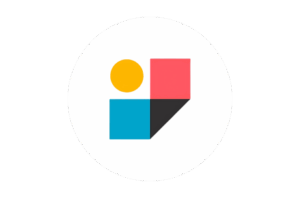
Gary, you like that intro?
That was perfect. There’s a few, few acronyms in there as well. It was great.
Just, just a few, just a few. But I’m so excited and mentioned to you before we started recording, I definitely wanted you on here completely for selfish reasons. So I’m, I’m really glad we were able to make this happen. How are you?
I’m doing well. I’m doing well.
That’s great. You know, Mooresville, North Carolina, I’ve actually been there before. I’ve been there several times. So I’m in Atlanta. I think you’re just maybe a two to three hour drive away from me.
That’s about it. You’re our sister to the South.
Yes, because I’ve done some work at Lowe’s Corporation.
Yes.
Yeah, they’re headquartered there, so just a little fun. Interesting. Fun fact, side note, but are you originally from New York, Gary?
I’m originally from New Jersey.
New Jersey, Okay.
Yeah. I moved here about 15 years ago and I’d like to say that, you know, I’m probably about a year or two away from getting my, my south card, but nobody agrees with me on.
That because I was wondering, I was looking at your LinkedIn profile and I was like, okay, New York, New York, New York, looking at your work experience and I was like, how on earth did he end up in Mooresville, North Carolina from New York City? Please tell us.
Interesting. The simple answer is taxes. But I actually made the move down here about 15 years ago and really it was born out of. I owned my own business at the time and doing executive search consulting mainly within the pharmaceutical industry. And I made the decision at that time to go from a physical office to a virtual office.
We were well ahead of our, our times and so I said, okay, where would I like to move? We actually looked in a couple different areas that, that were appealing to us and actually Raleigh, North Carolina was one of the first ones. And then we said, let’s just take a day trip north of Charlotte and check out that metro area. And we absolutely fell in love with it.
There’s Lake Norman is one of the big draws here and seeing how the school systems were. My children were of school age at the time and fell in love with it. We literally signed a contract to have a house built within 24 hours. So if that doesn’t tell you a little Bit of how impulsive I am. That’s kind of a micro of my life.
I would imagine. Culture shock, right? Did you give yourself time to, you know, for yourself, your wife and your children, time to adjust?
Yeah, I’m a much more patient driver now than I once was. Yeah. And in general, I’ve learned to hold longer conversations and really, truly listen. So. Yeah.
And look people in the eye.
And look them in the eye. Yes. And I know when somebody says bless your heart, it’s not always a good thing to me.
You know. And again, speaking of your work experience, as I was looking at your profile on LinkedIn, I noticed that at one point you were an IT business manager at a Best Buy in North Carolina, because I thought that was what originally maybe led to your relocation. But as you mentioned, it was your business, the business that you owned. But tell us a little bit more about what you were doing at Best Buy.
So when I worked for Best Buy, I actually worked for a division of Best Buy that a lot of folks aren’t familiar with. It’s Best Buy for business. And essentially what it was is that I had a territory just like a B2B sales territory. And what we did was we worked with the stores themselves and we had about 15 stores each. And so if business customers came into a Best Buy, instead of them taking care of them in the store, what they would do is they would refer them to us and we would be able to open them up to plethora of other solutions outside of what’s just offered inside of the store.
So it was interesting. I had the Carolinas and yeah, it was actually a segment of Best Buy that I didn’t even know existed until I interviewed for the position. And it was great experience. It really was, because you got to really talk to and work with customers that were small operations of five, six, all the way up to Fortune 500. So that you were looking for. For solutions for. To help out as well. So, yeah, it was really a good experience from that standpoint.
And so did that prepare you for your current position at PSS? How did you. What led to you working or leaving Best Buy and going to s?PSS
So there was a couple stops in between.
Okay.
I actually worked for an organization called Reveal for a number of years that was for about three, four years. They were actually based out of the UK and they, they were looking for somebody to start up a United States operation. And at the time I didn’t think it was going to. My only concern at the time was that the business wasn’t going to be well received in the United States.
That business happened to be body worn cameras. Yeah. Within about six months into the role, it became the hot topic. And this was, this was back In, I guess 2013, I would say. Great experience, great experience there as well because I was able to set up channel partnerships, really learn the ins and outs of the infrastructure and, and what it takes to, to run a, run a business because it was from scratch, hiring, bringing in folks here in the US from, from a support standpoint as well as helping to build out some of the sales team as well.
Yeah, that was great experience and basically transition from there to PSS. And I hate to say what really drove me more than anything else to take the position with PSS, but it really was a 2.8 mile commute.
Nice, very nice.
Everything else ended up being just gravy. That was, that was one of the best aspects. I had about an hour and a half commute prior to that. And I’m a learner by nature, so I researched everything about the company. It’s a smaller organization.
It was a couple who started the company about 25 years ago out of necessity, meaning that the original owner was out of work. And they basically bootstrapped, just the two of them and built it into a successful business catering to the education market regionally within the Carolinas, Southeast, down to Florida.
But I fell in love obviously with the location, but then I fell in love with them and I wanted to come on board and to help support them in any endeavor that they were looking to do just because of how authentic they were as people and what they were serving. They were serving education and student, which I felt was really something that I could get behind. So yeah, I came on board because of the commute, but I fell in love with the business.
And tell us more about the business itself. First, what does PSS stand for? Because I searched all over the website trying to figure it out and, and I started coming up with terms in my head, but I was like, no, that probably isn’t it, but what, what does it stand for?
So it’s probably not as meaningful as, as what we could come up with as a, as a make believe, but it was Presentation System south was the name of the company.
Yeah, I would have never guessed that.
Yeah, see and then about a year and a half ago, we’ve actually changed ownerships. They’re both in their 70s, so it was time to move on and we were taking this and we’re looking to scale the business from a national standpoint and PSS obviously is a little bit easier to scale across the country than just having the, you know, the regional south aspect of it.
So we’ve shortened that just like AT&T and MTV and you know, and it’s just made it a little bit more so we’ve even thought about, you know, okay, so what, what can we make PSS be now? PSS I guess is just pss and we’ll, we as, as, as the company of the culture will create and make what PSS is.
Yeah. And so, so please tell us more about what you all do because not only do you have, it sounds like you have a combination of goods as well as services that you all are providing. Is that true?

Absolutely. So what we do is our whole mission here as a company is to create meaning learning experiences for students. How we’re helping to solve that today is with our solution that is as you mentioned, a combination of physical equipment which is a wide format poster printer so that you can print out posters, hang them on the wall, have that visual connection for whatever you’re trying to teach, whether it is mathematics, science, whether it’s social, emotional, learning, motivational posters, things of that nature that really soak into the long term memory or our other part of that physical solution is our magic cutter.
So you could take any of this and you can cut out designs and you can make manipulatives for the students. Turning 2D into 3D, that physical analog piece that is kind of missing that tactile where everything has become digital. And obviously in the last year, year and a half, it’s really, really driven towards the digital where we know that there’s still a need in this space.
So that’s the physical side of our solution. Now on the other end of that, what we really work hard towards is the content. And that content is really where we have an impact to be able to make an impact on a student’s life. We know visual learning, visual learning itself seeps into the long term where if it’s audible, if it’s something that, that we’re saying it’s all short term and if we’re lucky, 60 to 70% of that is retained and that’s at the adult level.
When you’re talking about a child, a second grader or even a high schooler, if 30, 40% of that verbal altercation is, is received, that’s a success. So we know if we want to have an impact and we want to be able to not only get them to pass a test, which is important, but to have it Seep into the long term memory this solution with the content that we create.
We have advanced degree educators on staff that is creating this, making sure that it’s aligned to their standards so that it’s moving them along. But if we can make difficult or challenging concepts simplified and it becomes the building block for their education, then we’re doing something. Because as, as we know, especially in the public school sector, there are a lot of gaps that need to be filled.
There’s a lot of pain that’s being felt. And if we can have an impact in lessening that gap and really having a profound impact on students lives, that’s, that’s what we want to do. And on the other end of that, what ends up happening is it is helping on the other end inadvertently. And that’s the educators, parents, because there is time, There is personal, personal funds that teachers spend annually out of their own pocket just to take care of their students.
It is something that is. There’s a huge gap that needs to be corrected there too. So this saves them time, saves them money. They know it’s curated resources that is, are going to be aligned to the standards that they have to teach to.
Whether we like it or not, they have to teach to. And if we can save them the time and the money and the effort that they are putting in on weekends, after hours, outside of test scores and grading papers and things of that nature, then that’s where we want to be able to have a positive effect as well.
You know, Gary, I really appreciate you saying, you know, that physical analogy component of learning and for those of us who are tactile learners, because something that has always fascinated me personally is for some reason, once we graduate from high school, and let’s say for those of us who go on to higher education, I tell this story often about how my textbooks went from color to pure black and white.
No pictures, no illustrations. And it made me realize how important things like color and these other types of visual aids are in the learning process. Not just in learning the material, but as you pointed out earlier, memory retention and the ability to recall the information that you are learning.
So that’s why I said, for my own selfish reasons, I wanted to have this discussion with you because I’m so fascinated by what you all do. And I’m wondering, the visual aids that you all create for other teachers, for other educators, do you also work with adults at the collegiate level? The universities, community colleges, even junior colleges, do you all do any work with adult learners or educators?
We do some. And you’re absolutely right. I think as humans we’re hardwired and that doesn’t stop at a particular age. We have done some work with some community colleges and universities in the area as well as. Actually it’s interesting because there was actually some, some work we’ve done even with prisons because of the impact that it has because they teach there. And in addition to that, motivational posters, images mixed with the right words have such a profound effect.
The bulk of what we do is K through 12. But you’re absolutely correct in the sense that there is a lot of synergy between what we do here and how it has spilled over into some other segments. But even from a broader perspective, I don’t think we ever get to a point where that visual learning that tactile anything beyond just words spoken or written goes away. It’s such a profound way to learn.
I completely agree with you. And just to explain for those who are listening right now, it seems like there are three main product, product lines or products. The Magic Cutter, Poster Maker and Cool Lamb. Can you explain each of those?
Sure. So the poster maker itself is basically the beginning of the solution. That’s where you can take the content, whether it’s ours, it’s your own created. And you can print out a full poster size, you can print out full 20 foot banners if you’d like and all the way down to an eight and a half by 11.
So the size is something that depending upon what the need is that you could do then from there you can either just hang those on the wall, like I said, inspirational, or if it was something tied to a lesson plan. And then the next piece to that solution is the Magic Cutter itself. And the Magic Cutter is something that’s actually we launched about a year and a half ago and it just fits so well into what we offer, And because what you could do is you can actually print out a full size poster and then putting it through our Magic Cutter in a pretty simplistic way, it reads all of the cut dimensions around individual pictures, letters, things of that nature, and it’ll cut them out.
So you can use it as simple as on like a bulletin board. So if you wanted to have letters, shapes, things of that nature, or as complex as creating 3D dimensional. But we have a gentleman actually who’s here and we call him Sir Cuts a lot, he’s taken on this product and just ran with it and he’s come up with the most interesting solutions for it.
From mazes down to buildings, masks, things of that nature that he’s been able to create with it, but it just shows the breadth of what you can do with a little bit of creativity. So that’s really the second part of the solution. And the third one you mentioned is the Koolam. And the Koolam really just fits in perfect because what we’ve learned within schools is they laminate everything.
If they had an opportunity to laminate one of the kids, I think give it a shot. But unfortunately, today laminators are extremely expensive. They cost between 2, 3, 4, $4,000. And they have to run off electricity. It takes about 30 minutes to warm up. They break down a lot, which is costly for repairs. So we actually have a solution called the cool lamp in which you’re able to laminate anything that’s cut out or any of our posters through a crank and you laminate it within 30 seconds, no electricity or anything. So it’s just the perfect complement to the complete solution.
And I must say, I watched the videos for all three products and it’s very impressive. And we’ll make sure that we have links to all of those videos on the website, you know, in the show notes. But something else I was curious about. Is there a software that accompanies these products? Okay. So it kind of, you know, it almost. It sounds like it’s a cricket machine, but on steroids.
That exact analogy has been used before. Yes.
So for those who are listening, the Cricut machine is for people like myself want to be Martha Stewart. Right. For arts and crafts types of projects. But it allows you to create these different figures that you can then just put in a certain type of specialty paper into this Cricut machine. C R I C U T and then it just cuts those shapes out. You can use it to make cards, greeting cards, I mean, just for a number of different things. I actually use it because I create these stick figures.
Yes.
That I use when I’m working with my clients to help them figure out the departments of their company who, which resources work in all of those departments. And one thing it does not do is the lamination piece. That’s why I was saying, for my own selfish reasons, when I saw your product, I was like, oh my gosh, this is the missing link.
Because I can cut these, these specialty sized stick figures. But if we laminate it, we still have to physically cut out each stick figure once it’s been laminated, which kind of defeats the purpose.
Yeah.
And we want to be able to do things on a small scale right now before we get into mass production and I was thinking this might be the product for us.
You need a cricket on steroids.
The cricket on steroids. Now you know Gary, something else that I noticed on your LinkedIn profile that that also made me smile as I was reading your description of your position as COO at PSS. You wrote that quote, you serve as the glue between staff, customers and the community. And I love that. That is such a, a succinct description of what a COO does. At what point did you realize that you really enjoyed operations?

That’s interesting because I realized it very early on in my career. I was actually at a point in my mid-20s where I was working for an organization, that smaller company, maybe about 45, 50 people and I was doing sales as a regular sales rep. And they put me into like a sales leadership type of position where I was over 30% of the sales team.
But at the same time because they were small, this is the mid-90s, they were going from paper to this new thing called a network computer system where it was going to be a local server with workstations, etc. But they didn’t have anybody that was able to project manage it.
So I project managed that and we put in the NT server and we put in all the workstations. I helped to do the server based install and the workstation based install. And when I got done with the project, I remember one of the executives came to me and said, Gary, we value what you’re doing, leading portion of the sales team and we also value how you own this operational project management piece with setting up the network.
So we can’t have you keep doing both. You’re going to have to make a decision. And I remember I went home that night and I said to myself, wow, I haven’t taken any Clifton strengths or you know, Myers Briggs. I didn’t know exactly what my strengths were at that point. But you have an intuition of what they are. And I love, I’m extremely organized, I’m process driven.
But I like leading people and I like, and I enjoyed sales. The decision came from I could control my compensation a little bit more if I went to the sales side. So at the time I thought this was this why in the road for me but realizing, reflecting back on now, it was just part of the complete circle.
I went down the sales path but I was always operations best friend because I was the sales guy that, you know, had all the notes, I was the sales guy that you know, checked all the boxes and did everything the right way.
So I’ve Always had that in me. This opportunity here is what’s allowed me to come full circle. So it really was something that’s just ingrained in me, this love of business, business infrastructure, the way that a business operates, its heart, its soul, and each one is a different DNA. Right?
Yes.
I love it. And finally in my career is when I realized working for PSS and having that opportunity and being valued in the sense that, okay, I came on board to lead the sales and marketing initiatives here, but they saw in me that process driven, that seeing there’s a shorter, easier, better way to do, and allowed me to grow into the CEO role that I’m into today.
Because it’s not a traditional path of most operations executives. But I wouldn’t change it for the world because now I realize it wasn’t a why is just a different way to get to complete my circle.
Very interesting. What exactly do you do as Chief Operating officer, Gary?
Yeah, that’s a good question. And I would say the most simplest ways of doing it, saying it is I fill the gaps and I am the glue to make it move forward. You actually had Maria Jones on not that long ago. Yeah, and I love. I love Maria. She’s also in the CEO forum and.
Right, right.
And she sums it up well. And it’s kind of taking a page out of the EOs. But you have a CEO who is the visionary. And I think I have some visionary muscles, but I am really, really an implementer. That’s who I am. And so what I do is I fill in the gaps, I become the glue. Or as I tell our CEO all the time, you make it grow, I’ll make it go.
That’s where my passion is. I love figuring out that challenge. Where’s our capacity? How do we gain more capacity? Is this scalable? Is it sustainable? I want to get two times ahead of where we are today, always. So it truly is. That is a passion for me, but that’s how I serve here. And it really is true that I serve everybody within the company.
Now that doesn’t mean you come into my office and you bring all your challenges and leave them with me. You’re going back out with them. But I’m going to make sure that we’re doing it and we’re doing it collectively and we’re doing it as one unit and getting it done.
So I would imagine it also involves, or maybe it doesn’t, because you’re functioning at it at an executive level and not necessarily like a frontline manager being on the shop floor for Example, I’m just envisioning the manufacturing processes that are involved in creating these physical products, the printers, the self cranked lamination tools that you all have.
So, so there’s that component, but, but you’re just again, because you’re functioning at a much higher level, it’s just kind of okay. If those frontline managers come to you with specific challenges, then you’re able to just kind of talk it out with them. But it sounds like you all now exercise or promote a great deal of autonomy now within the company.
That’s the case. Both of the case. Should I say I go out there? If somebody in the warehouse calls out, I go out there, I pull orders, I’ve helped to build the systems here. They’ll eventually kick me out because they’ve had enough of me. Because, you know, I go back there with my eyes of, oh, we really need to change this, we need to change that. And no, we need to pick that order to get it out the door, Gary.
But I do try to lead from a standpoint of knowing at least being able to do and chipping in, because we are, we’re in that interesting spot of growth. For 25 years we were growing at that steady 10, 15%. We’re a regional player.
So I had to get my hands dirty and everything. And I do until like I said, they kick me out. But yeah, the autonomy part that you mentioned there is key because where we are at before, it made sense to have a very strong top down approach where basically our CEO at the time was the final decision maker on everything.
So it had a float both ways. But in order to grow and scale sustainably, that autonomy is something that we really, really had to work hard at within the last year and a half.
And something else you said that has also resonated with me. You described what you do and operations in general as the heart and soul of the company. And I appreciate that, Gary, because so often we hear of operations being referred to as the engine.
Something that has a recurring theme that has spread throughout or kind of served as a thread that has woven every single one of these episodes of this particular season together is that people component and the need to humanize operations instead of mechanizing it.
Right? So by referring to it as the engine, that’s mechanical, speed, manufacturing speak, but by referring to it as the heart and soul, that really does humanize operations. Because at the end of the day, it requires human beings, people to make this, all of this happen. This, this idea of operational excellence. And speaking of people, how many employees do you all currently have at PSS?
So at the moment we employ about 25. We’re still in the small stage portion now. A year and a half ago we floated around that 13, 14. So. Wow.
So you’ve doubled. More than doubled, yeah.
Yeah. And this is through the pandemic. You know, this is definitely our part of our aggressive plan to grow and we anticipate over the next five years it’s it, we’re talking 45, 50% clipping year growth. But you know, obviously along comes with that is additional employees, additional help, additional additional resources that are going to help make PSS who PSS is going to be.
Absolutely. And I’d like to read another quote and this was something that I saw on PSS’s website, which is PSS. At PSS, we are creating a culture in which we bring our entire person to work. We want to live an integrated life in an integrated world. We’re going to go ahead and take a break to hear from our sponsors, but when we come back, Gary, I’d love to take a peek behind the curtain of PSS so that you can tell us what that actually means and how you all have been able to achieve operational excellence. Shifting from that top down approach to what sounds like it’s more of a bottom up approach now that involves a lot more autonomy.
So let’s go ahead and take a break and when we come back, we’ll talk through all of this. As companies scale systems break and data and segmentation that used to be relevant and personalized can quickly become stale and out of date. That’s where HubSpot can help. Its CRM platform helps businesses automate every process to reduce customer friction.
Keep your team efficient and your customers happy. By coding custom automation actions for every business process, including lead rotation, territory management, renewals and more. You can even trigger actions in third party systems like Slack, Zoom and more directly from HubSpot workflows. And stay organized by quickly viewing, updating and managing team permissions, ensuring that everyone has access to all the assets they need at the right time.
Learn more about how you can scale your company without scaling [email protected] so you mentioned this earlier, Gary, that there’s been a fairly recent change in ownership at PSS, that the original founders are getting up in age and there’s a new sheriff in town.
Can you tell us a little more about that? Obviously, of course, without revealing too, you know, any proprietary information. But what led to that decision that you know, because that is a difficult thing when you’ve built. You’ve had a company for over 20 years, and now all of a sudden, you have to put it into the loving hands of someone else. What was that transition like and what led to that decision to eventually sell to a new owner?
That’s a great question. I think the number one thing was this business really served as the original owners, like, third child. This was their baby from birth. And I know the exit strategy has been thought about for them for two, three years prior to actually making the move. And I have to say, what was wonderful about the process was identifying the right person, not the most money. And there were a couple of folks that came in and made offers to the business, and they talked about how they’re going to strip it down to nothing and they’re going to bring in their own people and do these things.
And I have to love the fact that they had such an emotional connection to this business that they started that they really, really wanted to make sure that the character of the individual that was going to come in and continue this legacy Right.
In an infinite mindset was the right person. And I have to say, I did not have a lot of interaction with new ownership before the transaction took place. So I had my nerves. You know what’s going to happen just like anybody. And it is the. It was the most wonderful continuation of this legacy of PSS that could have transpired. Yeah. A lot of what we’re doing is based off of.
Off of where we’re trying to take the company and how we’re trying to take it there. But more importantly, why? I mean, we have actually gotten deeper, deeper into the relationships that we can have with students and educators and really around that mission, that mission of creating effective learning experiences for students.
I don’t know what that’s going to entail five years from now. Could be. It could be a different widget, it could be a different solution, but it’s all going to be around that central theme of creating meaningful and effective learning experiences for students. And I love that.
What used to be, in all honesty, was what made sense, Big good business sense was being good to the customer, which is great. It’s fantastic. The concept today is be good to the customer. Something positive will come out of that.
Yeah.
And it’s just so authentic, so real. And it starts with the big three. Luckily enough, I think anybody within an organization has leadership responsibilities, no matter who you are, as a part of the executive team, helping to create that culture of taking care of each other first, then taking care of our customer and our Community.
We were tied into that. We’re tied into it. I know if I set an environment here that takes care of us, they’re naturally going to take care of our customers and we have to take care of our community. We mimic Salesforce’s 1% pledge every year we are, even as a small organization and we’ll continue to do it as we get bigger. 1% of our profits, 1% of our product and 1% of our time. And that’s in your PTL. And you get two days to, to go off and volunteer.
You want to do it as a group, you want to do as an individual, fine. But we pledge this every year and it just sets the stage for where we’re going. It’s not about a product, it’s not about revenue, it’s not about cash flow. And then, you know, makes all of us operation people cringe because we know that’s important. But at the same time it shouldn’t be the drivers, it should be the result.
Absolutely. And you know, it’s, it’s interesting because the people that work for you or the people that are under your leadership are actually your internal customers. So you have your external customers obviously that you’re selling these products and services to, but then there are your internal customers in the form of your teams and again the people that you are managing on a day to day basis.
And speaking of people, you know, one of the best ways to improve operations and is obviously as we alluded to earlier before the break, is by working with people, which also happens to be a component of business infrastructure. And for those of you who are listening to this show for the first time, business infrastructure is an operations system for linking people, processes and tools and technologies to ensure that growth happens in a profitable and sustainable way.
So you’ve been talking about this seamless transition. It sounds like relatively seamless transition in ownership, which is amazing. But I would imagine that only happened as a result of having a really good business infrastructure in place.
Can you speak to that a little bit more, Gary? And how you all were able to actually, in the course of changing ownership, also changing the levels of autonomy and decision making that now exist and kind of permeate throughout PSS.

Absolutely. The biggest change, or I should say the observation that I had when I took over the operations team was that we have bright people, capable people in each one of our roles. But the challenge was we were under this structure of top down, top down management. I’m a middle Gen Xer, so I, I’ve kind of grown up in that environment where most places were this top down type of structure, you got approval before you did anything.
You can have ideas sometimes, but you know, at the end of the day you just, you, you had to bring it up the ladder, you had to wait for it to come back down and you got this filtered result that you can run forward with in best case scenario. What I found right away was a couple things, is one, it’s extremely time consuming and who does it become time consuming for is me. If, if I’m getting pinged on every little thing.
Yeah.
To get done. In addition to that, you know, I have this aha moment of who’s to say that my brain is the right brain to solve this issue as one brain. So it definitely eliminates a lot of creativity. And then the third part to it all is we talk about all the time, just in general in society, about growth, growth, mindset, getting people. You know, you don’t hire somebody for their role today.
You hire them for their capabilities of where they can go. Well, what ends up happening is you end up in a situation where the person that moves up is the one that can take orders the best. And what does that do? What does that do for the individual? So we, we, we really in the beginning, there’s a little bit of a struggle to it because folks were so used to this top down type of environment. And, and I wouldn’t even say folks that were in this organization, folks that were hired and came in that was the type of environment that they were used to.
So a couple things that we, I wanted to do and set the stage for was one, mistakes are welcome, please make them. But if you’re going to make them, make them quick. The only thing I ask is that you learn something from it. It doesn’t matter if it’s a $50 mistake or a $5,000 mistake.
I treat them both the same. It never starts with finger pointings. It always starts with what do we do? They are equal. Yeah. One cost a little bit more, but they’re equal. They’re mistakes. Number three was this whole concept of you should know your job better than I do. I’m going to give you the autonomy to run it. The big thing that I will bring to the table for you is the context, the context of why we’re looking to do what we need to do. And you’re going to have the freedom to figure it out.
Not only do I want you to try it, I really need you to because that’s the only way you’re going to be Able to scale. You have to take away all of that up and down for approval and get everybody’s buy in before making a decision. No, mistakes are okay. We’re going to iterate from it. Iteration one should be a lot different than iteration five. But the only way that we could truly get there is allow for you to own it, allow for you to figure it out. Because that was one of the things that I noticed, like in my own career as a, you know, sometimes reflect back on is I figured it out.
Yeah.
And I have to allow other people to have that freedom. I’m always here to support you, glue and fill the gaps. That of course. But at the same time, my number one question back to anybody that says anything or asks for anything is what do you think?
Because that’s where the growth is going to really take place. Not because you’re able to follow orders better. And plus, it is, it’s the only way to get from this level of where we’re at right now, which is a successful small business.
But we want to aggressively scale. And if we don’t take away that top down, if we don’t give our individuals the ability to have extreme ownership of their roles and that autonomy, that entrepreneurial spirit within a company to make those decisions good, better and different. But to figure it out. You always have a sounding board. But we want you to run. We want you to run, not walk and wait.
Gary, do you all have an organizational chart that reflects what this looks like now?
We do and what it is? Because this was one of the things that we had to kind of put into play as we grew and as we are growing, should I say, and that is there was multiple people that could handle multiple responsibilities, which is great. You should always be able to cross train. But the only way that you can really have success in ownership is clearer defined lines of what your role is.
We had folks that were in administrative support and it was very, very fuzzy. So it just, it ended up spending a lot of time for internally, externally as well, of who do you go to for what? So we were able to kind of split that out, at least create that framework of who owns it, is responsible for what, and then let them grow out, let them, you know, grab the muscle bone, grasp the muscle, the whatever’s needed to put onto that bone.
But we set at least the bones for each individual. So yeah, we organized it all out. We have, you know, we have, from an operational perspective, we have customer support, vendor management, we have folks that handle just the service for the field, for field Sales also for Inside. And then we have obviously Warehouse, we have our integrators. But now it’s a matter of, okay, whatever it is, that’s who you go to.
You know what fascinates me so much about this particular success story? It’s unlike any of the others that, that any other company I think has ever shared on this show. And we’re, we’re well over 150 episodes now. But what was so fascinating to me about this story that you’re sharing with us, Gary, is that we’re not talking about a specific process that needed to be tweaked or streamlined.
We’re not talking about a specific technology that you all started to integrate into your, your day to day processes. We’re talking about a change in the organizational structure. And this is refreshing because it’s a different look at how to actually organize the people. You know, you have the manufacturing processes down pat, right?
You, you all know how to, to fulfill the orders to your point. But it was that the physical organizing, that organizational structure of the actual team members, that’s the part that needed to be worked on. And I don’t think that’s a conversation we’ve ever had on this show, but it’s so important. Is there a resource that you can recommend?
Did you all just maybe get a PowerPoint deck and just kind of draw a bunch of boxes or what does your organizational chart look like? And, and what tool did you use to create it?
So use a lot of. It’s really a hosh posh of different tools and resources that I’ve personally used. I mean, I’m an avid reader and I can basically a lot of what putting into place here is a combination of Principle Centered Leadership by Stephen Covey Leaders Eat Last by Simon Sinek no rules Rules.
The title is fun to say. No rules. Rules was a great inspiration for this. It’s basically the Reed Haskins, the CEO and founder of Netflix conversation that they had with him on their culture. And this example of extreme ownership and leading with this context was a big aha moment for me.
There’s a number of other ones. From a process standpoint, the four disciplines of execution, 40x EOS, lean, six sigma. We take from a process standpoint pieces of all of that that make up what I would consider to be the PSS DNA. But even from there, it really is a combination of all those things that we continue to read. But it gave us this foundation because the most important part that you mentioned there is the people I can geek out all day on the tech stack that we’ve improved upon. But we’ve done a lot of that because when I walked in the door, it was a pure paper company. But I really feel as if the beginning and the end is the people. That’s your DNA.
That’s what makes your process, your success different than anybody else’s. Is that unique DNA. But doesn’t mean we shouldn’t take from the greats. We shouldn’t learn what is best in practice. But at the end, it’s going to be unique to how we serve the market. Our why we’re serving the market should be the driving fabric throughout the organization in determining what that process looks like with the right people.
There was a book that you mentioned and I didn’t catch the entire title, Four Disciplines of.
Yes, Four Disciplines of Execution. Yeah, and it goes by four DX sometimes. And it’s actually written by Sean Covey, who is the son of Stephen Covey of the Seven Habits of Highly Effective People. So he took a little bit more of a spin of breaking down the execution and how to execute and develop these processes. But we took a lot of. It is the human aspect that they have in there as well, which I just ate up. I loved it.
Yeah, absolutely. This, you know, this is. This is great. And I’m. I have to ask this question. Do you all actually use your products to create visual aids? I can just envision them being on the shop floor. But also, as you mentioned, you can create these inspirational posters.
Do you all actually use your own, your own products to make visual aids that you have that may be on the service placards on the walls throughout the actual facility?
We do. We have them. I mean, just in my office alone. I was just counting, as you were saying, that I have. Of seven or eight that are hanging here, and it’s a combination. I utilize it for our maps for different territories.
I have inspirational posters that I’ll hang up because I’m constantly looking at, you know, okay, this. Oh, this is the. The mother of all inspirational saying. So I need it. And I’ll put that up there for a couple months and then take it down. And whatever my latest inspiration is, I’ll put that up as well. But it is interesting because even though this is what we do, we’ll go down the rabbit hole sometimes, say, oh, we really need this, this, and this. So we can do that.
We can do it here.
Okay. Yeah. And then, boom, we do it.
Well, this has been absolutely great. Gary, thank you so much.
Thank you.
Such an interesting company with a Very interesting product. And again, I’m totally geeking out every time I go to the website and see what you all have going on. And the growth that you all have experienced is incredibly impressive. Just to add some more stats, I saw that you have partners, over 2,400 education partners across 30 plus states here in the US so that is really impressive.
And please keep in touch because I definitely want to see and don’t forget us little people here when you all reach not at all over 500 employees. Employees like, hey Gary, want to come back on the show and talk about that? Alicia?
Anytime, anytime. I love it.
Well, this has been fantastic. So, you know, I just want to recap some of the things that you, you shared with us. I mean there’s so much. My pages of notes here are completely filled. But just to quickly recap, you talked about the importance of, you know, why PSS exists in and of itself and that is to create meaningful and effective learning systems for students.
And I love the discussion that we had about visual aids and how important it is for not just learning material, but being able to actually comprehend and retain that material that you’re learning. And for some reason, once we become adults, once we hit 18 to 21, baby, it’s our world goes forgotten. Yeah. And you know, that’s, that’s so interesting because to your point, there has been such a push towards digital transformation in the way we operate and do things, but we still very much need that analog piece as well.
I’m definitely a tactile learner, so I definitely resonate with everything that you all are doing. You also mentioned that images mixed with the right words are incredibly powerful. We talked about the magic cutter machine being like a cricket machine but on steroids and I can’t wait to get my hands on one. But I also appreciate it.
Gary, when you talked about what your role is as a COO and there were certain attributes that you mentioned that again really struck me and resonated with me. Being organized, being process driven, you like leading people and you have this very interesting start as a salesperson, but you were able to work your way up into being over all of the company’s operations.
I really like the relationship that you described between yourself and the CEO. You make it grow, I’ll make it go. Thank you again for sharing this story about how you all have been able to focus on the people aspect of operational excellence and going from a top down approach to a bottom up approach and how that alone just unleashed so much innovation.
You’ve been able to Double the team during a pandemic, no less, as well as scale the company’s overall capacity. There are a couple of other things. I don’t want to make this too long, but I feel it’s worth repeating some of the guideposts that you mentioned that mistakes are welcome.
If you’re fascinated by what Gary and the folks at PSS have going on, make sure you reach out to him. What’s the best way for. For people to connect with you?
Gary, I’m a LinkedIn junkie.
Okay.
And I’m open. I’m open to networking, helping, doing whatever I can to bring anyone along.
Yeah. So the correct way to spell Gary’s last name is N I C K O L S. Or look for him on LinkedIn. Gary Nickol. That’s G A R, Y N I C K O L. Gary, I know we have to wrap it up, but thank you so much. I wish we could talk more hours. Yeah, I know, me too. But unfortunately, we have to wrap it up. But I do thank you so much for coming onto the show and for reaching out.
I’m so glad that our paths have crossed now. I’m not going to let you go anytime soon. Yeah. Thank you. For those of you listening, make sure you check, check out BusinessInfrastructure TV, because that’s where we’ll have quick links to all of these books that Gary has shared with us.
We’re also going to have links to these really cool products that PSS creates. You’ll be able to see them as well as the videos that speak to all of the amazing things that educators and students around the country, around America, have been able to do as a result of their products.
No need to type out that web address. Just make sure you click the link that’s in the description of this episode. Wherever you’re listening to this podcast, and it’ll take you directly to this list of resources we’re talking about. While you’re at the website, you’ll also find more information about the HubSpot Podcast Network as well as our sponsors.
Please make sure that you support them, because when you do, it helps us keep this show free for you. Again, click the link in this episode’s description. Thank you. So much watching for for tuning in, and for being a loyal subscriber.
Remember, stay focused, be encouraged, keep operating as good on the inside as you look on the outside, because this entrepreneurial journey is a marathon and not a sprint.
Until the next time, thank you for Listening to Business Infrastructure, the podcast about curing Back Office Blues with Alicia Butler Pierre.
If you like what you’ve heard, do us a favor and subscribe. Leave comment a a rating and review, and more importantly, share with your colleagues and team members who could benefit from the information. Join us next week for another episode of Business Infrastructure with Alicia Butler Pierre.
![]()
![]()


